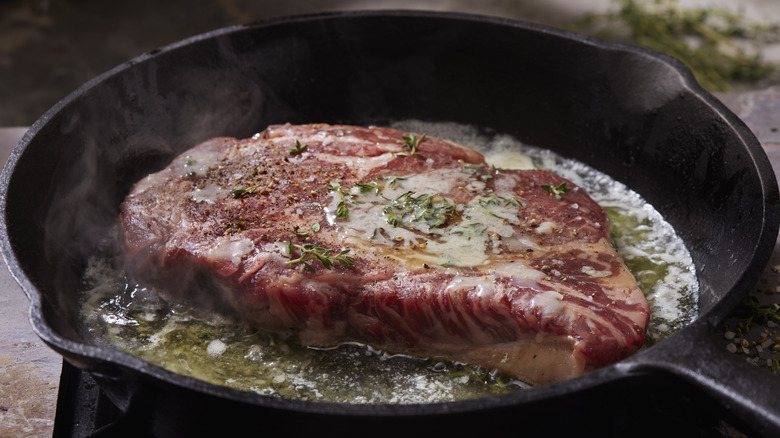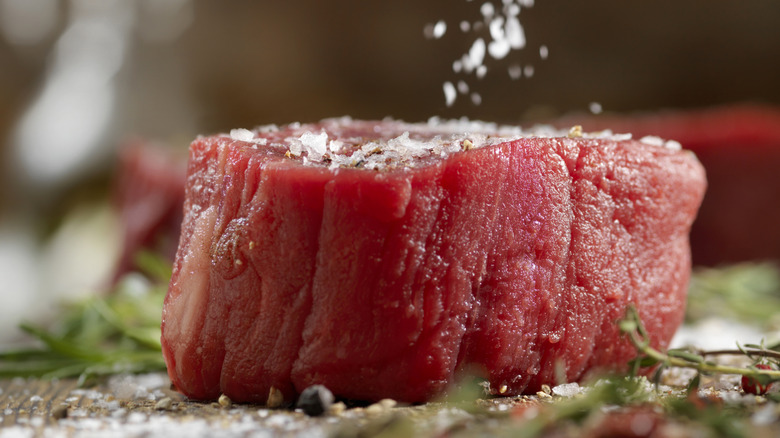The Case For Salting The Pan, Not The Steak, For The Ideal Crust
We here at Tasting Table love steak, as evidenced by the number of times we've written about it. We've shown you how to cook the perfect filet mignon every time and considered the relationship between a good crust and the thickness of the cut. Generally speaking, we've adhered to the conventional wisdom regarding the basics of cooking a good steak: salt the meat and let it sit before cooking, and buy thicker cuts in order to develop a good crust. Now, throw both of these principles out the window, because we're about to make a case for not only buying a thin cut but salting the (preferably cast iron) pan instead. Is this daring enough to make you a little giddy? Wait until we address how high the heat needs to be!
First, let's talk about the kind of steak we'll be using — and it's nothing fancy. Use any available cut that is relatively small (around 2 pounds), thin (up to 1 inch), and boneless. Does this sound limiting? Not at all: you can still choose from skirt (preferably "outside"), hanger, chuck-eye, flat iron, ribeye, and strip. Before cooking, be sure to let the steak come to room temperature while drying it thoroughly. (We recommend covering the steak with paper towels, letting it sit on a plate, and changing the paper towels as needed.) Less surface moisture makes for a better crust — so does the combination of salt and heat.
Is it getting hot in here?
While a stainless steel pan will work fine, there's something that just feels right about cooking a steak in a cast iron skillet. Sprinkle the pan with a good ½ teaspoon of coarse salt and whack the heat right up to high until it (literally) begins to smoke. Give the steak another drying pat and place in the pan. That's right — nothing but hot iron, salt, and meat.
Flip the steak with tongs after a minute of vigorous sizzling, moving the raw side around to mop up the rest of the salt. Keep the heat on high. Flip the steak every 30 seconds or so, adding more salt (and pepper if you'd like) as the crust develops — and boy, will it ever. You're looking for a crisp, dark-brown crust to appear after about four minutes. Use the hand test or a meat thermometer to test for doneness, then remove the steak to a cutting board, tent with aluminum foil, and let it sit for another five or 10 minutes. And there you have it: possibly the least fussy method to get a gorgeous, crisp crust without overcooking a comparatively thin steak to shoe leather.

